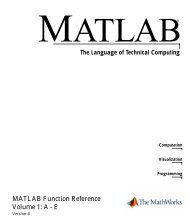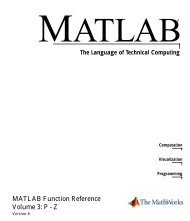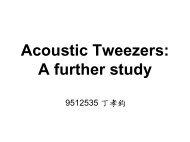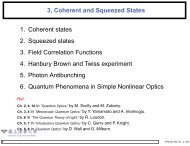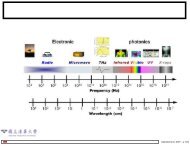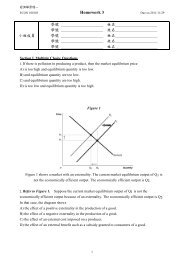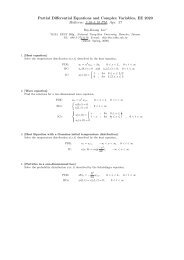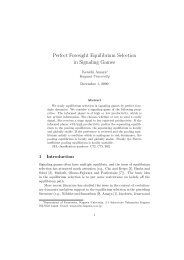Acceleration, Shock and Vibration Sensors
Acceleration, Shock and Vibration Sensors
Acceleration, Shock and Vibration Sensors
You also want an ePaper? Increase the reach of your titles
YUMPU automatically turns print PDFs into web optimized ePapers that Google loves.
Chapter 5<br />
Charge Mode Accelerometers<br />
Charge mode sensors output a high-impedance, electrical charge signal that is generated<br />
directly by the piezoelectric sensing element. It should be noted that this signal<br />
is sensitive to corruption from environmental influences <strong>and</strong> cable-generated noise.<br />
Therefore it requires the use of a special low noise cable. To conduct accurate measurements,<br />
it is necessary to condition this signal to a low-impedance voltage before<br />
it can be input to a readout or recording device. A charge amplifier or in-line charge<br />
converter is generally used for this purpose. These devices utilize high-input-impedance,<br />
low-output-impedance charge amplifiers with capacitive feedback. Adjusting<br />
the value of the feedback capacitor alters the transfer function or gain of the charge<br />
amplifier.<br />
Typically, charge mode accelerometers are used when high temperature survivability<br />
is required. If the measurement signal must be transmitted over long distances, it is<br />
recommended to use an in-line charge converter, placed near the accelerometer. This<br />
minimizes the chance of noise. In-line charge converters can be operated from the<br />
same constant-current excitation power source as IEPE accelerometers for a reduced<br />
system cost. In either case, the use of a special low noise cable is required between<br />
the accelerometer <strong>and</strong> the charge converter to minimize vibration induced triboelectric<br />
noise.<br />
Figure 5.2.4: Typical in-line charge converter system.<br />
140<br />
Figure 5.2.5:<br />
Laboratory charge<br />
amplifier system.



